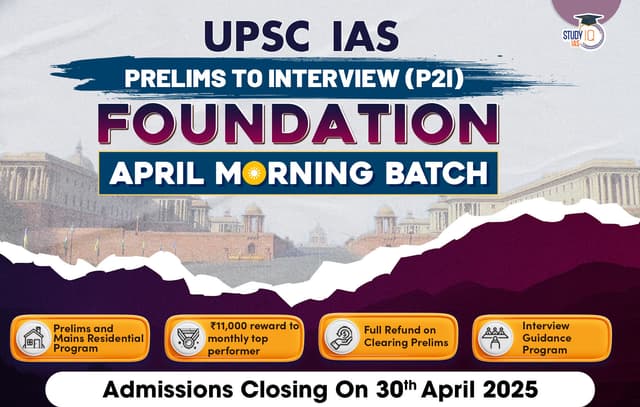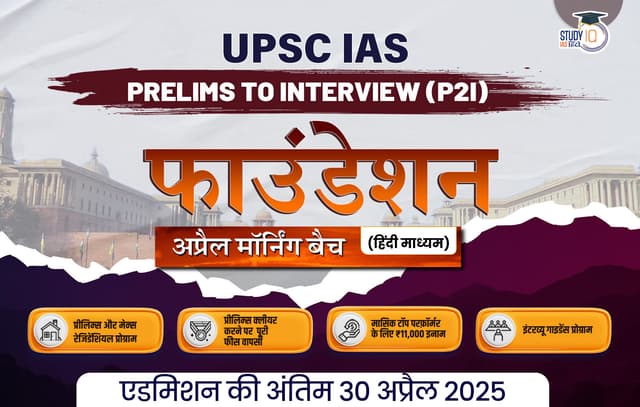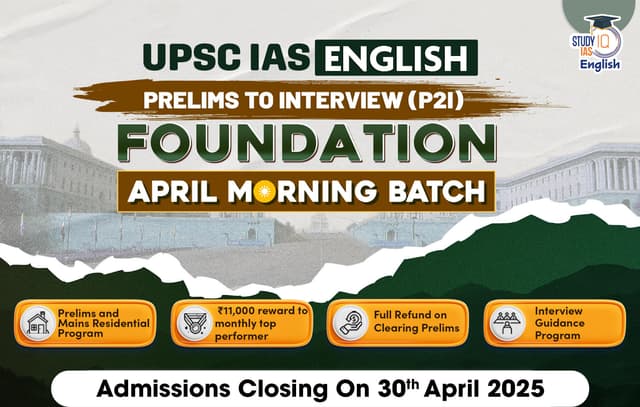Daily Quiz 06 January 2025
Quiz-summary
0 of 5 questions completed
Questions:
- 1
- 2
- 3
- 4
- 5
Information
- Click on – ‘Start Quiz’ button
- Solve Questions
- Click on ‘Next’ button
- Click on ‘Finish Quiz’ button
- Now click on ‘View Questions’ button – here you will see solutions and links.
- The test contains a total of 5 questions.
- Click on the most appropriate option to mark it as your answer.
- You will be awarded Two marks for each correct answer.
- You can change your answer by clicking on some other option.
- A Number list of all questions appears at the top side of the screen.
- You can access the questions in any order by clicking on the question number given on the number list.
- You can use rough sheets while taking the test.
- Do not use calculators, log tables, dictionaries, or any other printed/online reference material during the test.
- Do not click the button “Finish Quiz” before completing the test. A test once submitted cannot be resumed.
You have already completed the quiz before. Hence you can not start it again.
Quiz is loading...
You must sign in or sign up to start the quiz.
You have to finish following quiz, to start this quiz:
- 1
- 2
- 3
- 4
- 5
- Answered
- Review
-
Question 1 of 5
1. Question
1 pointsConsider the following information:
River Origin Tributary of
1. Ken Nandidurg mountain Yamuna
2. Betwa Vindhyan range Yamuna
3. Periyar Sivagiri hills Ponnaiyar
In how many of the above rows is the given information correctly matched?Correct
Answer: A
Explanation: Prime Minister Narendra Modi has laid the foundation stone for the Ken-Betwa river-linking project which is aimed at solving the water woes of the Bundelkhand region.
● Row 1 is incorrectly matched: The Ken River is a tributary of the Yamuna River. The Ken is one of the Yamuna’s main tributaries in the plains, and it’s the last tributary before the Yamuna joins the Ganga. The Ken River originates in the Mamar hills of the Katni district of Madhya Pradesh. Pennar river originates from Nandidurg.
● Row 2 is correctly matched: Betwa originates in the Vindhya Range (near Hoshangabad, MP), and travels a distance of 590 km, before merging with the Yamuna at Hamirpur . The Betwa River is a tributary of the Yamuna River. The Betwa River’s basin is saucer-shaped with sandstone hills around the perimeter. The river is not navigable for nearly half of its course. Ken Betwa link project (KBLP) aims to transfer excess water from the Ken River to the Betwa River, both tributaries of the Yamuna.
● Row 3 is incorrectly matched: The Periyar River is the longest river in Kerala, India, and is known as the “Lifeline of Kerala”. It originates in the Western Ghats’ Sivagiri hills and flows through the Periyar National Park. The river eventually empties into the Arabian Sea after passing through Vembanad Lake. The Periyar River is not a tributary of any other river, but it does have several tributaries itself. The Ponnaiyar River is a major river in the Cauvery Basin.Incorrect
Answer: A
Explanation: Prime Minister Narendra Modi has laid the foundation stone for the Ken-Betwa river-linking project which is aimed at solving the water woes of the Bundelkhand region.
● Row 1 is incorrectly matched: The Ken River is a tributary of the Yamuna River. The Ken is one of the Yamuna’s main tributaries in the plains, and it’s the last tributary before the Yamuna joins the Ganga. The Ken River originates in the Mamar hills of the Katni district of Madhya Pradesh. Pennar river originates from Nandidurg.
● Row 2 is correctly matched: Betwa originates in the Vindhya Range (near Hoshangabad, MP), and travels a distance of 590 km, before merging with the Yamuna at Hamirpur . The Betwa River is a tributary of the Yamuna River. The Betwa River’s basin is saucer-shaped with sandstone hills around the perimeter. The river is not navigable for nearly half of its course. Ken Betwa link project (KBLP) aims to transfer excess water from the Ken River to the Betwa River, both tributaries of the Yamuna.
● Row 3 is incorrectly matched: The Periyar River is the longest river in Kerala, India, and is known as the “Lifeline of Kerala”. It originates in the Western Ghats’ Sivagiri hills and flows through the Periyar National Park. The river eventually empties into the Arabian Sea after passing through Vembanad Lake. The Periyar River is not a tributary of any other river, but it does have several tributaries itself. The Ponnaiyar River is a major river in the Cauvery Basin. -
Question 2 of 5
2. Question
1 pointsConsider the following acts:
- The Protection of Children from Sexual Offences Act, 2012.
- The Scheduled Castes and the Scheduled Tribes (Prevention of Atrocities) Act, 1989.
- Employee Compensation Act, 1923
- The Juvenile Justice (Care and Protection of Children) Act, 2015.
- The Inter-State Migrant Workmen (Regulation of Employment and Conditions of Service) Act
How many of the above Acts deal with the Bonded Labour Provisions in India?
Correct
Answer: D
Explanation:
- Option (d) is correct: Bonded labour, also known as debt bondage or debt slavery is a person’s pledge of labour or services as security for the repayment for a debt or other obligation Bonded labour is widely prevalent in many regions in India. Some of the LEGAL PROVISIONS / RULES / LAWS/ACTS APPLICABLE IN THE MATTERS PERTAINING TO BONDED LABOUR LIST OF ACTS APPLICABLE TO BONDED LABOUR Abolition ACT are :
The Bonded Labour System (Abolition) Act, 1976;
Bonded Labour(Abolition)Rules, 1976.
The Child and Adolescent Labour (Prohibition and Regulation) Act, 1986 (As amended by Act 35 of 2016).
Contract Labour (Regulation & Abolition) Act, 1970.
The Protection of Children from Sexual Offences Act, 2012.
The Scheduled Castes and the Scheduled Tribes (Prevention of Atrocities) Act, 1989.
Employee Compensation Act, 1923 (As amended through EC (Amendement) Act, 2017.
The Juvenile Justice (Care and Protection of Children) Act, 2015.
The Inter-State Migrant Workmen (Regulation of Employment and Conditions of Service) Act, 1979 etc.
Incorrect
Answer: D
Explanation:
- Option (d) is correct: Bonded labour, also known as debt bondage or debt slavery is a person’s pledge of labour or services as security for the repayment for a debt or other obligation Bonded labour is widely prevalent in many regions in India. Some of the LEGAL PROVISIONS / RULES / LAWS/ACTS APPLICABLE IN THE MATTERS PERTAINING TO BONDED LABOUR LIST OF ACTS APPLICABLE TO BONDED LABOUR Abolition ACT are :
The Bonded Labour System (Abolition) Act, 1976;
Bonded Labour(Abolition)Rules, 1976.
The Child and Adolescent Labour (Prohibition and Regulation) Act, 1986 (As amended by Act 35 of 2016).
Contract Labour (Regulation & Abolition) Act, 1970.
The Protection of Children from Sexual Offences Act, 2012.
The Scheduled Castes and the Scheduled Tribes (Prevention of Atrocities) Act, 1989.
Employee Compensation Act, 1923 (As amended through EC (Amendement) Act, 2017.
The Juvenile Justice (Care and Protection of Children) Act, 2015.
The Inter-State Migrant Workmen (Regulation of Employment and Conditions of Service) Act, 1979 etc.
-
Question 3 of 5
3. Question
1 pointsWhich of the following statement with respect to the Real Effective Exchange Rate(REER) is not correct?
Correct
Answer: D
Explanation:
Statements (a), (b) and (c) is correct while statement (d) is incorrect: The real effective exchange rate (REER) compares a nation’s currency value against the weighted average of the currencies of its major trading partners. It is an indicator of the international competitiveness of a nation in comparison with its trade partners. The formula is weighted to take into account the relative importance of each trading partner to the home country. It takes into account inflation differentials between a country and its trading partners. An increasing REER indicates that a country is losing its competitive edge. An increase in a nation’s REER is an indication that its exports are becoming more expensive and its imports are becoming cheaper, reducing its trade competitiveness.
Incorrect
Answer: D
Explanation:
Statements (a), (b) and (c) is correct while statement (d) is incorrect: The real effective exchange rate (REER) compares a nation’s currency value against the weighted average of the currencies of its major trading partners. It is an indicator of the international competitiveness of a nation in comparison with its trade partners. The formula is weighted to take into account the relative importance of each trading partner to the home country. It takes into account inflation differentials between a country and its trading partners. An increasing REER indicates that a country is losing its competitive edge. An increase in a nation’s REER is an indication that its exports are becoming more expensive and its imports are becoming cheaper, reducing its trade competitiveness.
-
Question 4 of 5
4. Question
1 pointsConsider the following statements:
Statement-I:
As human beings age, muscle loss occurs at a rate of 3–5% per decade.
Statement-II
Mutations in mitochondria result in overproliferation of mitochondrial function as in cancer.
Which one of the following is correct in respect of the above statements?
Correct
Answer: C
Explanation:
- Statements I is correct: Muscle loss is a normal part of aging and is known as sarcopenia. It can occur as early as your 30s and continues at a rate of 3–5% per decade. The number of muscle fibers decreases and they shrink in size. Sarcopenia can lead to diminished strength and exercise capacity, and is a risk factor for disability and mortality.
Statement II is incorrect: Researchers have found out that mutations in Mitochondria result in gradual decline in mitochondrial functions which leads to the death of muscle cells. The death of muscle cells in turn leads to loss of muscle mass. Mitochondrial DNA is more prone to mutations compared to nuclear DNA as it is exposed to free radicals generated during energy production, which can damage DNA. When mitochondria are impaired they do not produce sufficient energy. It causes inherited conditions like heart problems, liver failure, brain disorders, blindness and muscular dystrophy.
Incorrect
Answer: C
Explanation:
- Statements I is correct: Muscle loss is a normal part of aging and is known as sarcopenia. It can occur as early as your 30s and continues at a rate of 3–5% per decade. The number of muscle fibers decreases and they shrink in size. Sarcopenia can lead to diminished strength and exercise capacity, and is a risk factor for disability and mortality.
Statement II is incorrect: Researchers have found out that mutations in Mitochondria result in gradual decline in mitochondrial functions which leads to the death of muscle cells. The death of muscle cells in turn leads to loss of muscle mass. Mitochondrial DNA is more prone to mutations compared to nuclear DNA as it is exposed to free radicals generated during energy production, which can damage DNA. When mitochondria are impaired they do not produce sufficient energy. It causes inherited conditions like heart problems, liver failure, brain disorders, blindness and muscular dystrophy.
-
Question 5 of 5
5. Question
1 pointsThis session of Indian National Congress emphasized the importance of promoting Khadi as a symbol of self-reliance and resistance against British. It was presided over by Mahatma Gandhi, the only time he served as the Congress president. Which of the following session is described above?
Correct
Answer: C
Explanation:
Option (c) is correct: The 39th session of the Indian National Congress held at Belgaum (now called Belagavi, Karnataka) in 1924 was the only Congress session presided over by Mahatma Gandhi. The session was attended by several senior Congress leaders including Jawaharlal Nehru, Sardar Vallabhbhai Patel, Sarojini Naidu, and Khilafat movement leaders Muhammad Ali Jauhar and Shaukat Ali, among others. The session emphasized the importance of promoting Khadi (hand-spun cloth) as a symbol of self-reliance and resistance against British economic policies. This initiative aimed to revive indigenous industries and reduce dependence on British goods. Calcutta session of 1901 was the first time Mahatma Gandhi appeared on the Congress platform.
Incorrect
Answer: C
Explanation:
Option (c) is correct: The 39th session of the Indian National Congress held at Belgaum (now called Belagavi, Karnataka) in 1924 was the only Congress session presided over by Mahatma Gandhi. The session was attended by several senior Congress leaders including Jawaharlal Nehru, Sardar Vallabhbhai Patel, Sarojini Naidu, and Khilafat movement leaders Muhammad Ali Jauhar and Shaukat Ali, among others. The session emphasized the importance of promoting Khadi (hand-spun cloth) as a symbol of self-reliance and resistance against British economic policies. This initiative aimed to revive indigenous industries and reduce dependence on British goods. Calcutta session of 1901 was the first time Mahatma Gandhi appeared on the Congress platform.
Results
0 of 5 questions answered correctly
Your time:
Time has elapsed
You have reached 0 of 0 points, (0)
| Average score |
|
| Your score |
|
Categories
- Not categorized 0%
| Pos. | Name | Entered on | Points | Result |
|---|---|---|---|---|
| Table is loading | ||||
| No data available | ||||
Sharing is caring!

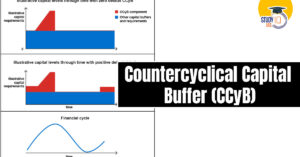 Countercyclical Capital Buffer (CCyB): P...
Countercyclical Capital Buffer (CCyB): P...
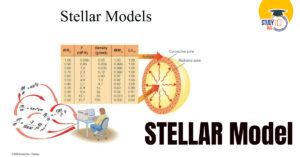 STELLAR Model: A Game-Changer in Power S...
STELLAR Model: A Game-Changer in Power S...
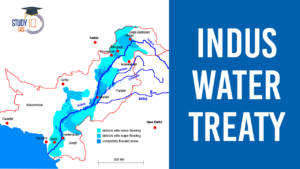 Indus Water Treaty 1960 Suspension Hurts...
Indus Water Treaty 1960 Suspension Hurts...

